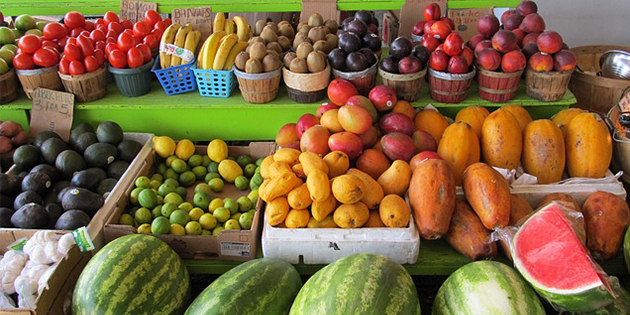Are You Judging a Fruit (or a Veggie) by its Cover?
When it comes to great tasting fruits and vegetables, you definitely cannot judge a book by its cover. But if some of the best tasting produce is less than perfect on the outside, why do consumers insist on buying only the most aesthetically pleasing?
This question is even more perplexing when you consider that more and more agricultural experts are telling us that the most beautiful fruits and vegetables aren’t always the healthiest or best tasting. In fact, in most cases, the only advantage of such produce is its ability to sell quickly.
According to the Natural Resources Defense Council, approximately six billion pounds – or 20 percent – of produce that is grown in the United States is thrown away each year because of its appearance.
So who is to blame for this search for the perfect fruit or vegetable? There’s plenty to go around. First, the USDA stipulates that commercially grown fruits and vegetables must be 90 percent blemish-free. Next, marketers are always on the lookout to photograph only the most aesthetically-pleasing fruits. These camera-ready specimens are hard for the average piece of produce to live up to and set an unrealistically high standard for fruits and vegetables. Finally, a large portion of the blame must be put on consumers.
When shopping for produce, most consumers select food based on how it looks rather than how it smells or how it will taste. This means that many fruits and vegetables are rejected solely on appearance rather than on taste, quality, or ripeness.
Thankfully, there is a new trend toward average-looking fruits and vegetables. Experts are pushing the message that perfect on the outside doesn’t necessary mean better tasting. In fact, pull an apple straight off a tree and it might not look perfect but it sure tastes that way!
There are several companies working to minimize waste by delivering less than perfect fruit directly to consumers. Farmers and consumers can both benefit from doing business this way. Farmers will be able to sell crops that would normally be bound for the landfill and consumers will be able to purchase produce for much less than they would pay in the grocery store – without sacrificing quality or taste. Across the country, farmers list these types of transactions as something they are very interested in pursuing.
Selling less than perfect-looking produce to restaurants is another untapped market. After all, diners don’t care how round a tomato is before it is baked into a lasagna. They only care how it tastes. And as anyone who is willing to take a bite out of an imperfect piece of produce will tell you, it doesn’t have to look perfect to taste that way.



